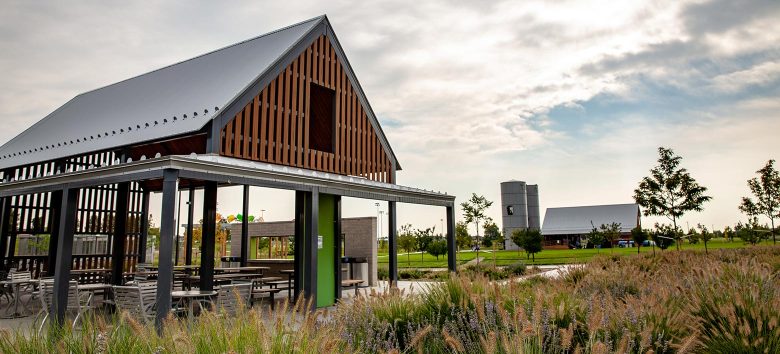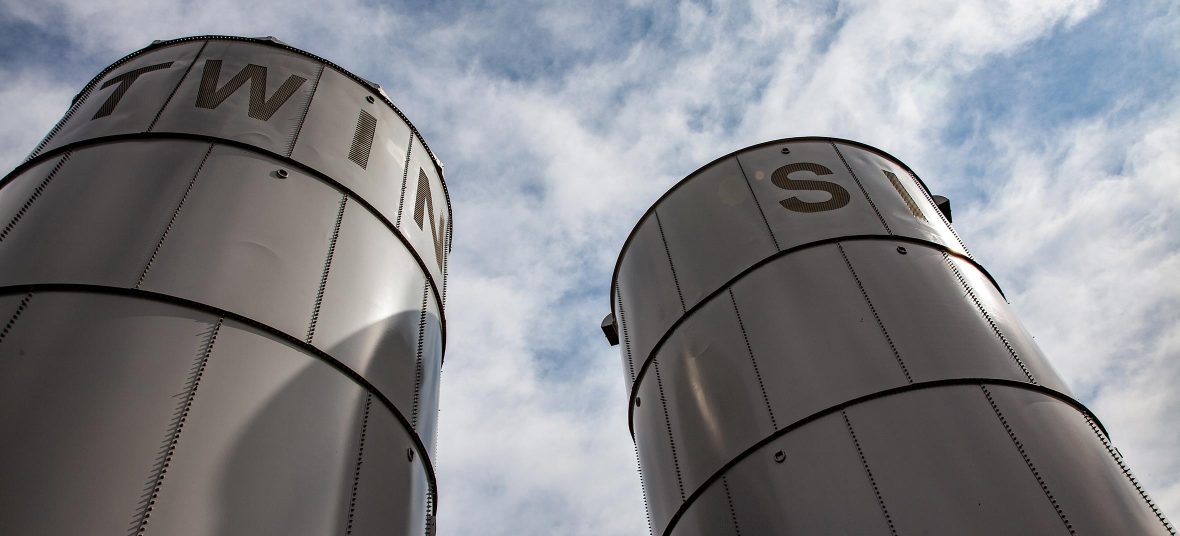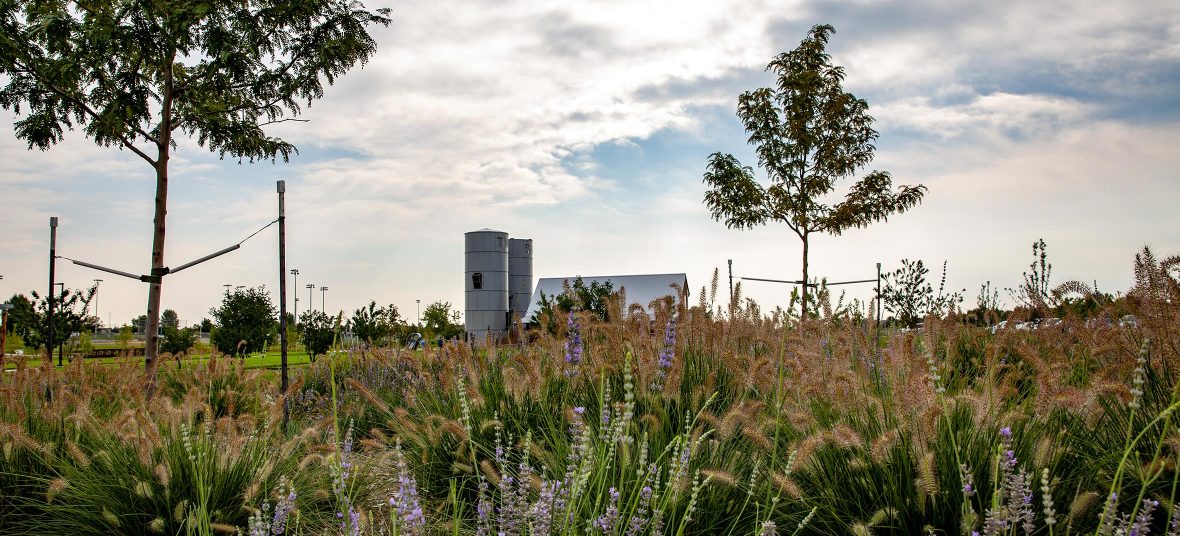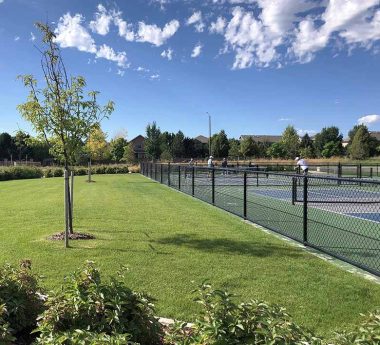Honoring Agricultural Heritage
Twin Silo ParkFort Collins, CO—USA
When Twin Silo Community Park opened in 2017, it checked all the boxes that Fort Collins, Colorado, needed in order to provide residents and visitors a wide variety of spaces and amenities for recreation:
- Paved recreation trails
- Pickleball courts
- Baseball and soccer fields
- Playground
- Dog park
- Community garden
- Picnic shelters
- Restrooms
Aligning Goals
But simply “checking the boxes” is never enough when the goal is to create a place that is not only sustainable and relevant for years to come, but also truly embraced by the community as their own. Common feedback received during the project’s public engagement process had underscored the community’s concern that they would be losing natural, open space to sports fields and courts that would be over-programmed and brightly lit. Fortunately, this wasn’t the city’s goal, nor Civitas’. Nature, and the community’s relationship with it, would always be the focus.
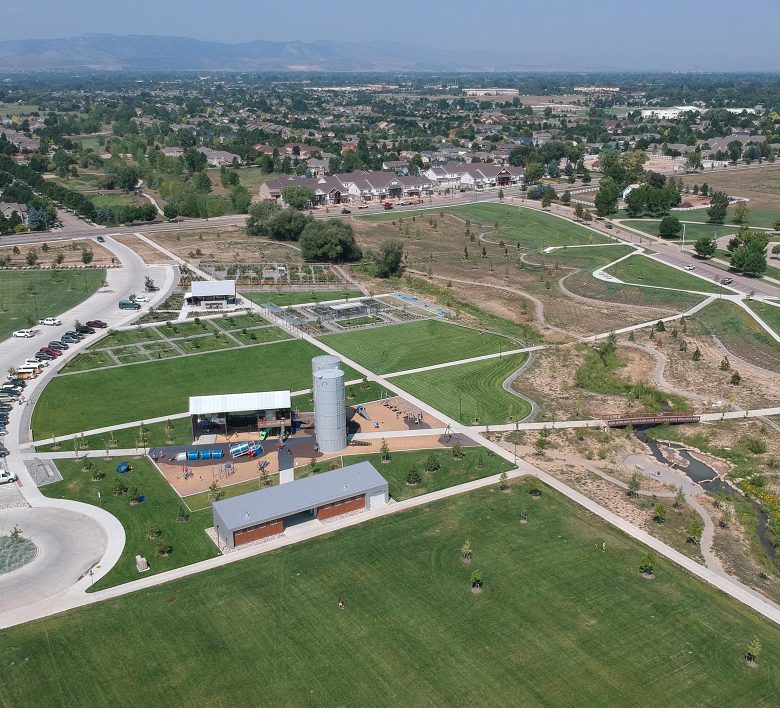
Embracing Heritage
Fort Collins has a strong agricultural heritage, and a family-owned farmhouse and barn that once stood on the site of the adjacent Fossil Ridge High School became a design inspiration.
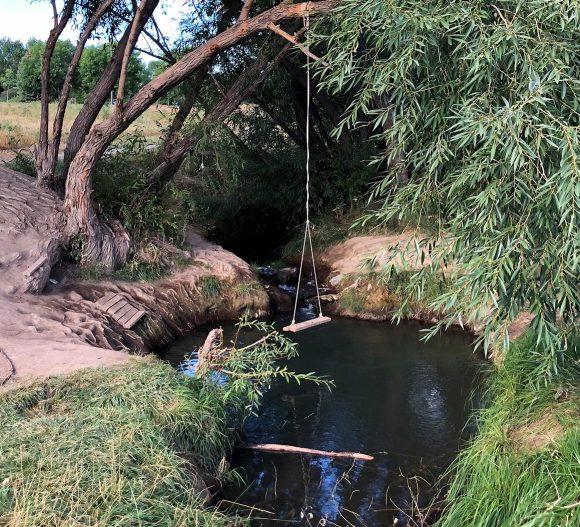

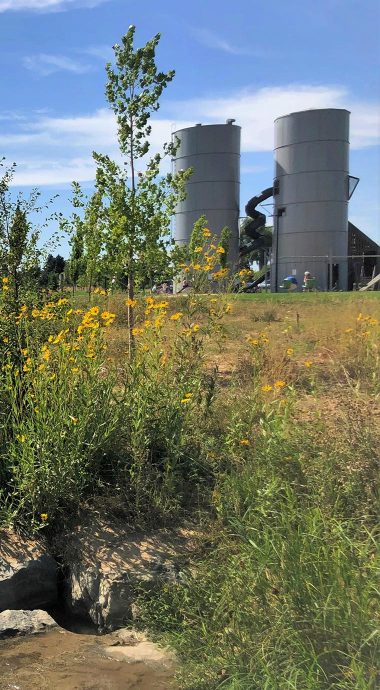
Reclamation
Another opportunity arose when a nearby road-widening public works project, at the intersection of Prospect and Timberline Roads, required five silos to be removed. Two of them were claimed for this project and rebuilt onsite, giving the project its “Twin Silo” name.
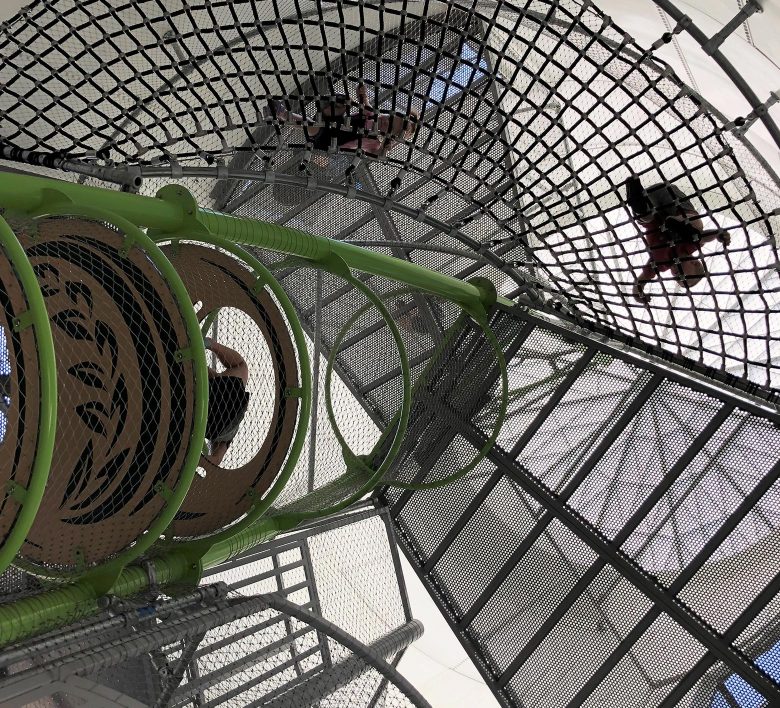
Collaborator Cre8play implemented the park’s play space components and retrofitted the two 48-foot silos with a double-helix spiral stairway and a giant spiral slide—the tallest slide in Fort Collins. A combine harvester was also built into the play equipment.
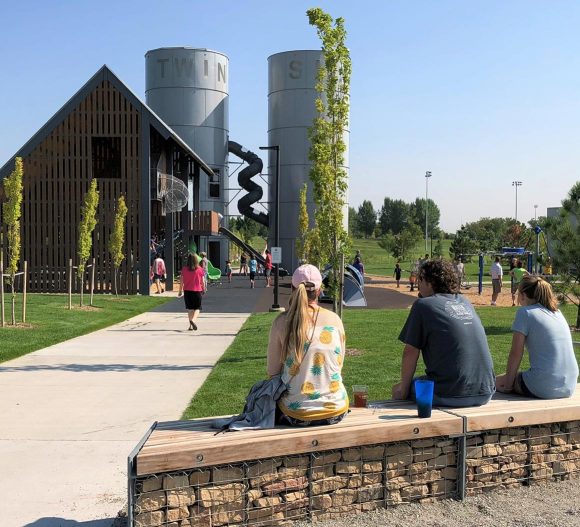
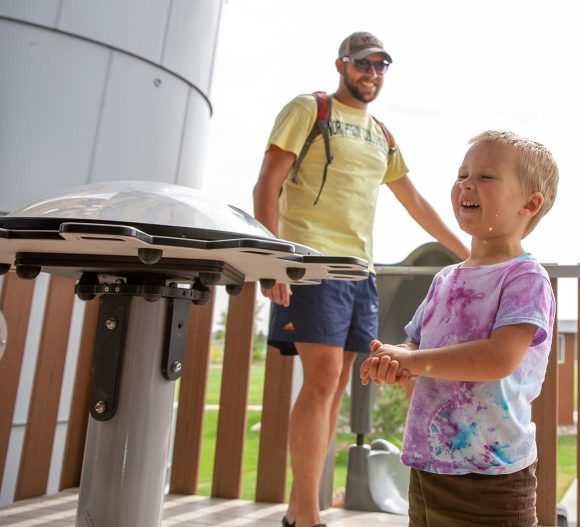

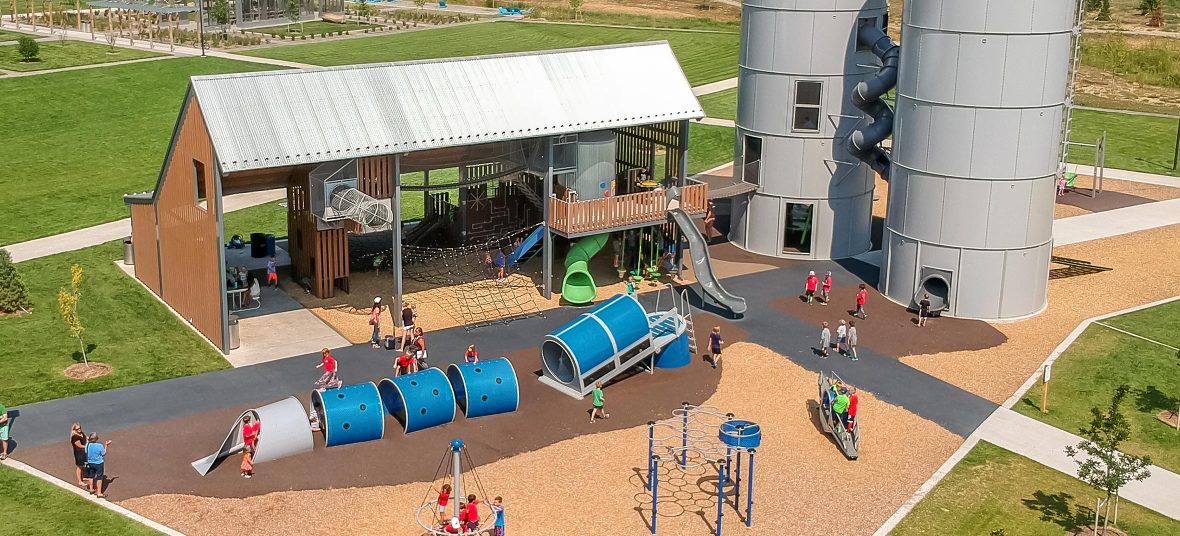
Finding Balance
All other park components would embrace this connection to agriculture and farming, and simply living in relationship with the land. Community concerns were quickly addressed by pushing vehicular parking to the park’s interior and emphasizing native landscapes and gardens on the highly visible perimeter. Recreation trails, community gardens, orchards and hops trellises would be prioritized. A harvest table with movable shade structures and hydroponic vegetable walls would be added, so people could gather and celebrate the land’s bounty. And while fields and courts would be provided and programmed for baseball, soccer and pickleball, they wouldn’t be lit.
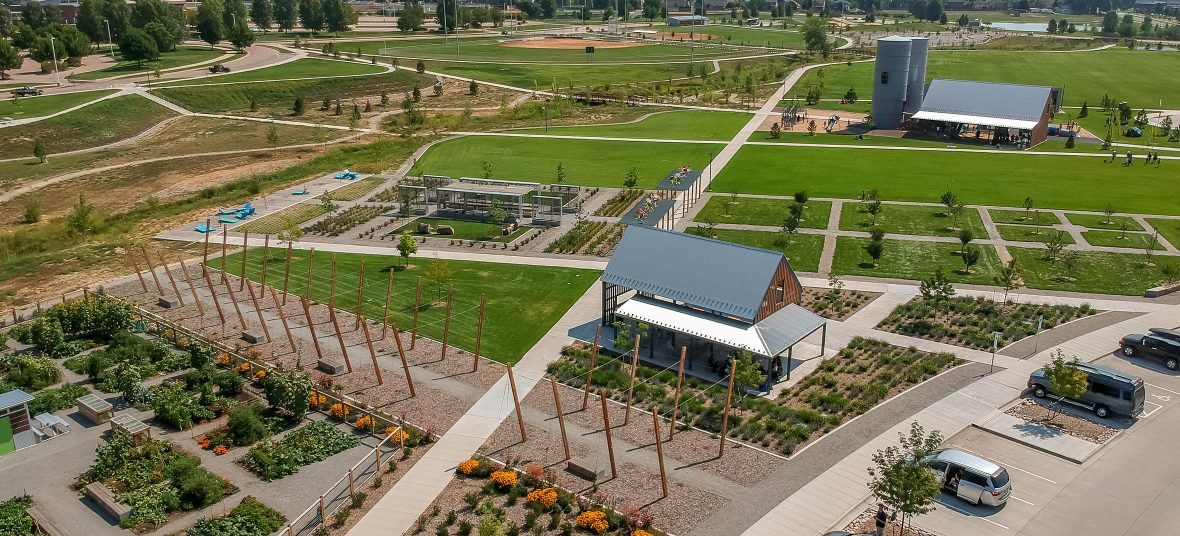
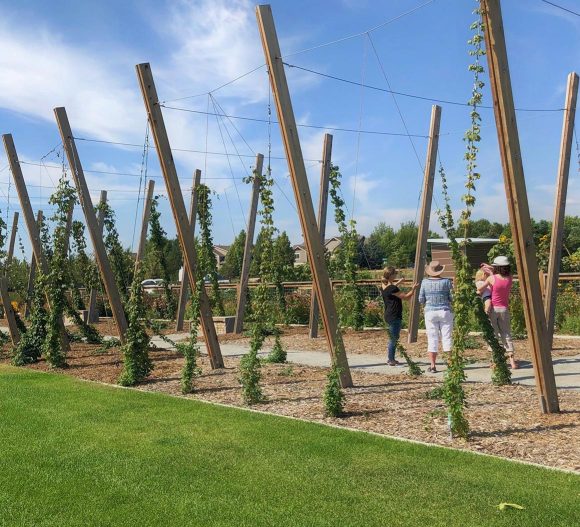
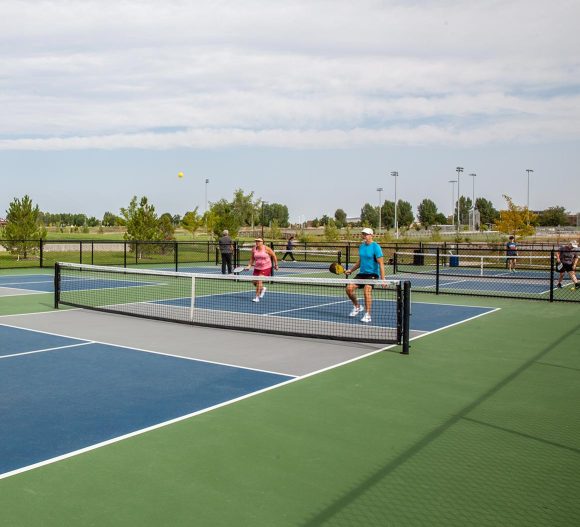

McClelland Creek passes through the southside of the park, which also posed additional opportunities for nature-based exploration and play, especially for children learning about the relationships between the land, water and people.
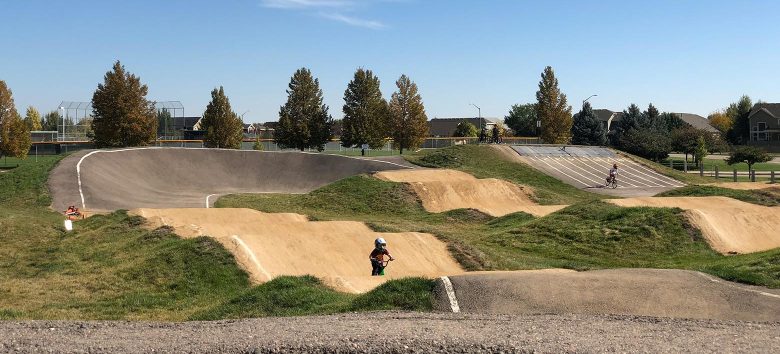
Reworking the creek also provided soil that not only facilitated improvements to the existing BMX course and competition site, but also provided a cost-effective solution for the creation of berms around the park, or natural landforms that created sculpted overlooks and picnic spaces connected by the park’s trails and creek crossings.
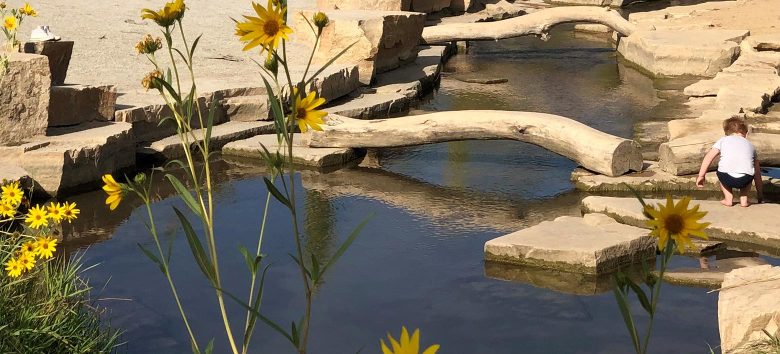
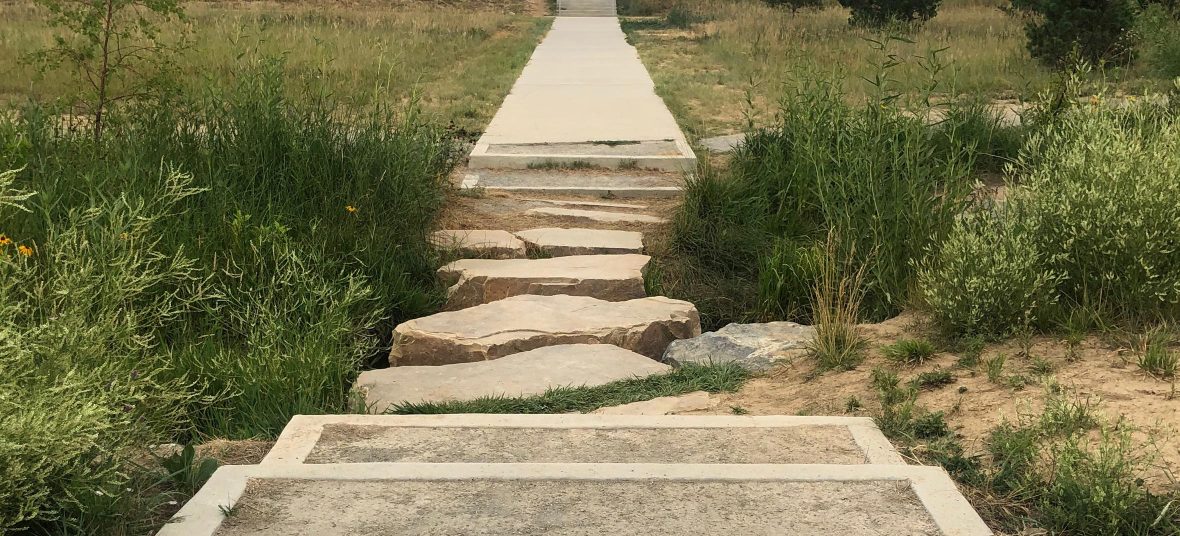
Saving Space
While there had been early fears that this project would take away much of the city’s natural space, in the end the wetland footprint was increased, and the site was heavily landscaped with native seed, which requires very little maintenance or manipulation to thrive. For the bluegrass turf fields that do require maintenance, a pond takes runoff from both the park and the adjacent high school and is used for irrigation.
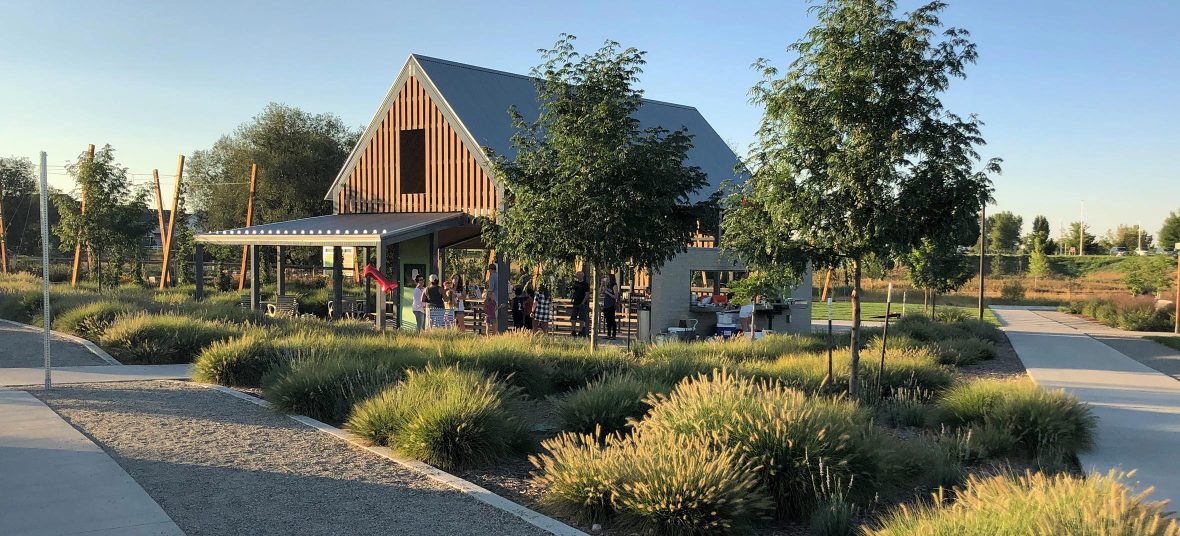
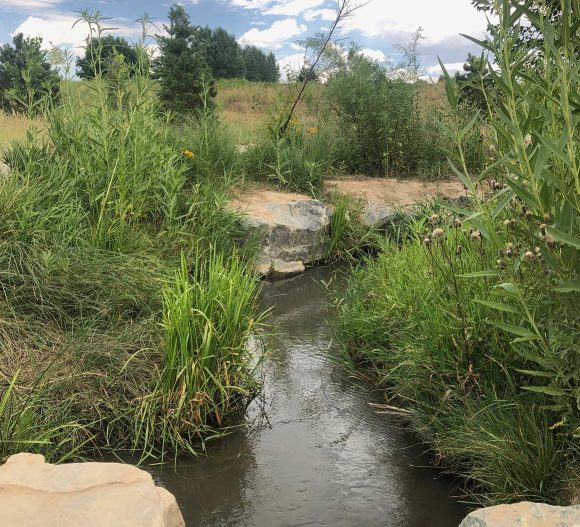
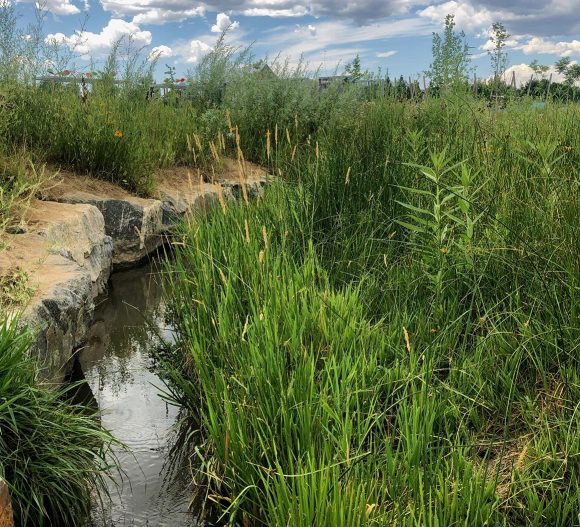
Creative Sustainability
The project demonstrates the city’s committed willingness to invest in parks and recreation, for the positive impact they have on the city’s—and its residents’—health and longevity. Yet its emphasis on sustainability contributed to its economics, too.
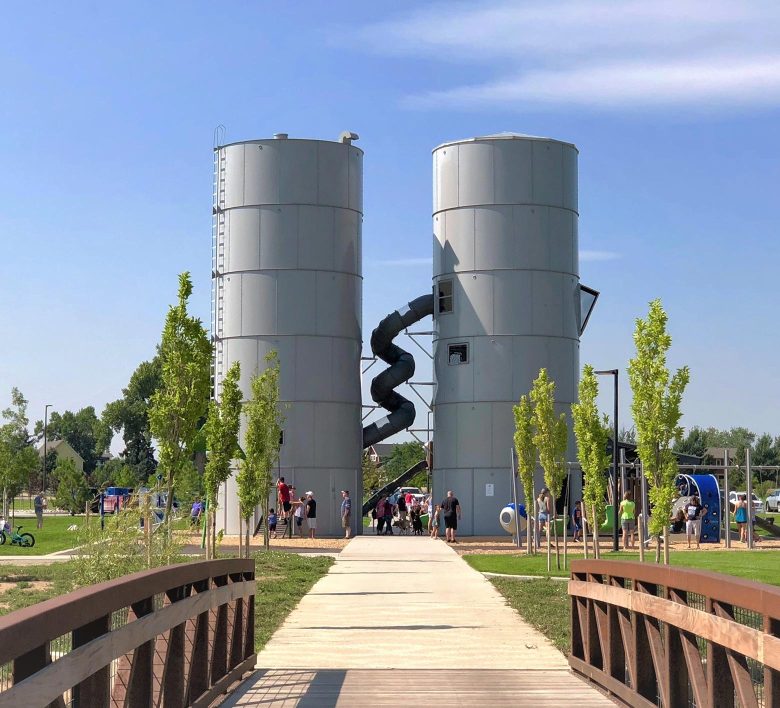
Material Considerations
Simple materials like concrete and prefabricated sheds kept costs down, while other components, including a bridge moved from another park, and the silos themselves were also rehabbed and reused rather than building new.
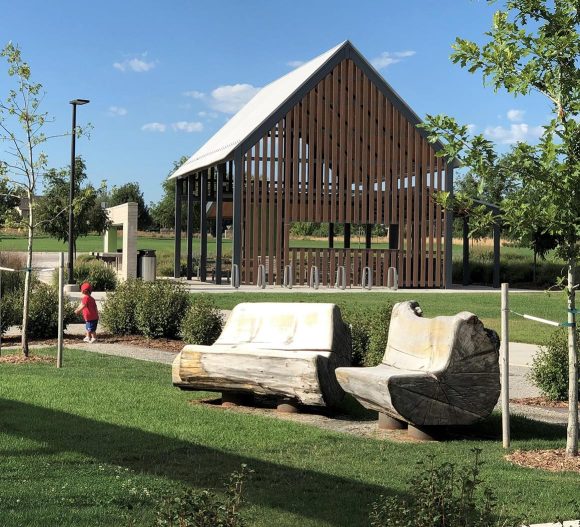

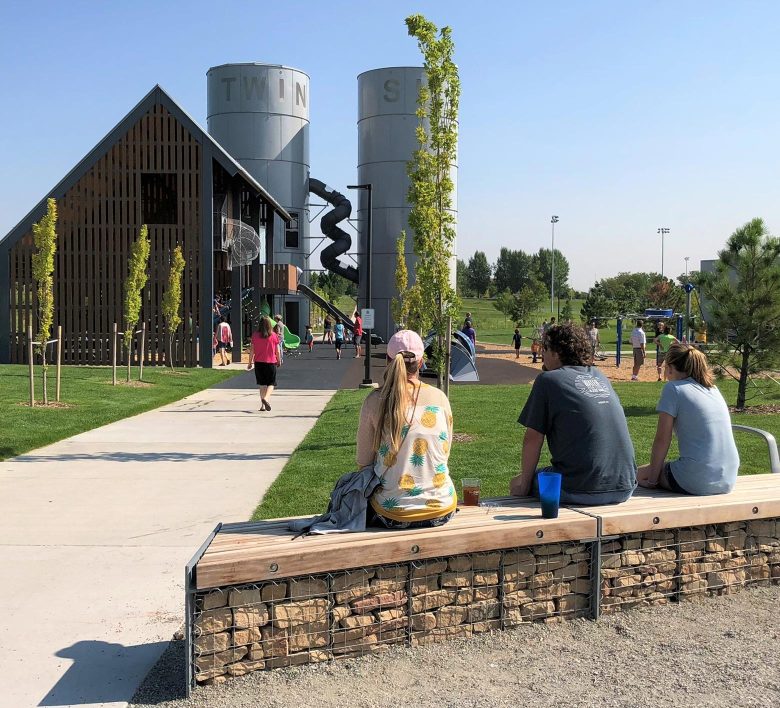
A Broad View For A Wide Audience
With a playground at its core, Twin Silo Park might seem, at first glance, like many other city parks. But a broader view makes it clear that a wide variety of recreation spaces serve a wide variety of residents and visitors – all celebrating this community’s close relationship with nature.
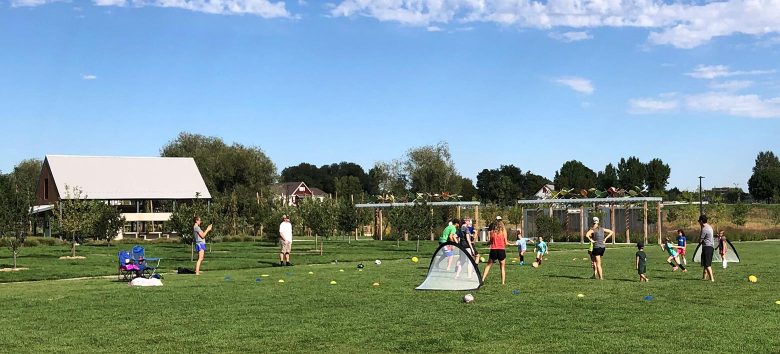
A Natural Draw
The award-winning park’s recreation trails, creek-side natural play area, BMX course, baseball and soccer fields – as well as its innovative playground – have turned Twin Silo into a destination that draws people from many miles away.
